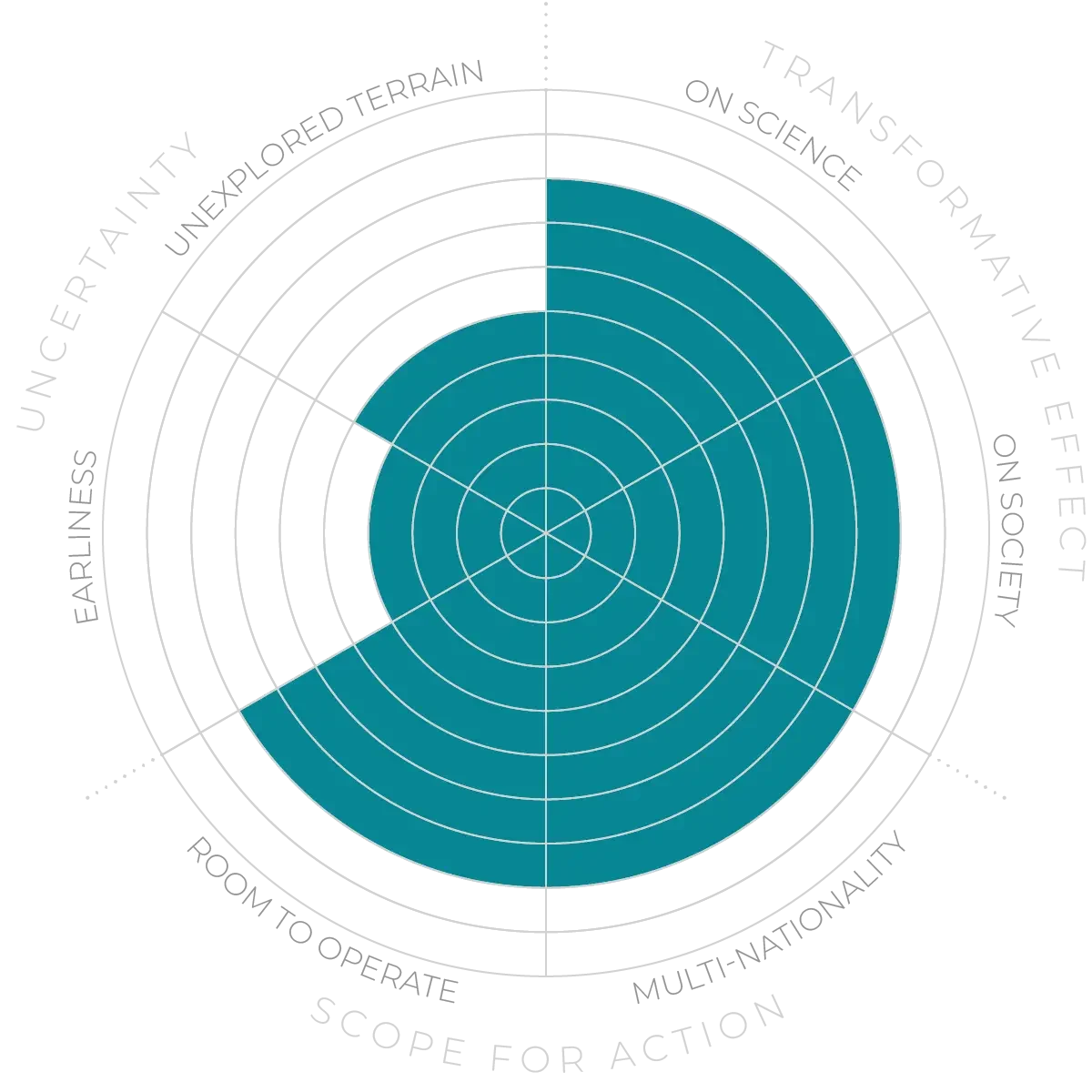Future Horizons:
10-yearhorizon
Genetic brain therapies controlled by light and sound
25-yearhorizon
Advanced biocompatible materials allow brain enhancement
Their operation relies on understanding — gained through techniques ranging from deep-brain stimulation and transcranial electrical and magnetic stimulation to optogenetics and chemogenetics — of how specific patterns of stimulation can shape behaviour and cognition. Yet the future of neuromodulation lies not only in stimulation techniques, but in adaptive, feedback-driven systems that can respond to neural and behavioural states in real time.17
Materials science remains a significant roadblock. Current implantable systems are built from a narrow range of materials, usually dry, rigid electronics, that are in stark contrast to biological tissue, which is soft and dynamic. This disparity hinders the development of higher-resolution brain-computer interfaces: future progress depends on materials that are flexible enough to cope with the movement of neural tissue, biocompatible and capable of being miniaturised and packaged in a way that protects the electronics within the body.18 While current research is promising, introducing new materials and manufacturing techniques is a slow process because of the extensive testing and approval required.19
Beyond electronics, alternative forms of modulation include optogenetics20 and sonogenetics,21 which offer higher selectivity but require substantial material and manufacturing innovations. Significant clinical testing will also be necessary.
Another key area of development is the detailed mapping of the brain’s connectome, cell function and spatial arrangement on the scale of individual neurons.22 These maps are already becoming available for animal models and will enable more precise, targeted neuromodulation and closed-loop systems that can record and stimulate neural activity with high precision.
Neuromodulation systems - Anticipation Scores
The Anticipation Potential of a research field is determined by the capacity for impactful action in the present, considering possible future transformative breakthroughs in a field over a 25-year outlook. A field with a high Anticipation Potential, therefore, combines the potential range of future transformative possibilities engendered by a research area with a wide field of opportunities for action in the present. We asked researchers in the field to anticipate:
- The uncertainty related to future science breakthroughs in the field
- The transformative effect anticipated breakthroughs may have on research and society
- The scope for action in the present in relation to anticipated breakthroughs.
This chart represents a summary of their responses to each of these elements, which when combined, provide the Anticipation Potential for the topic. See methodology for more information.



